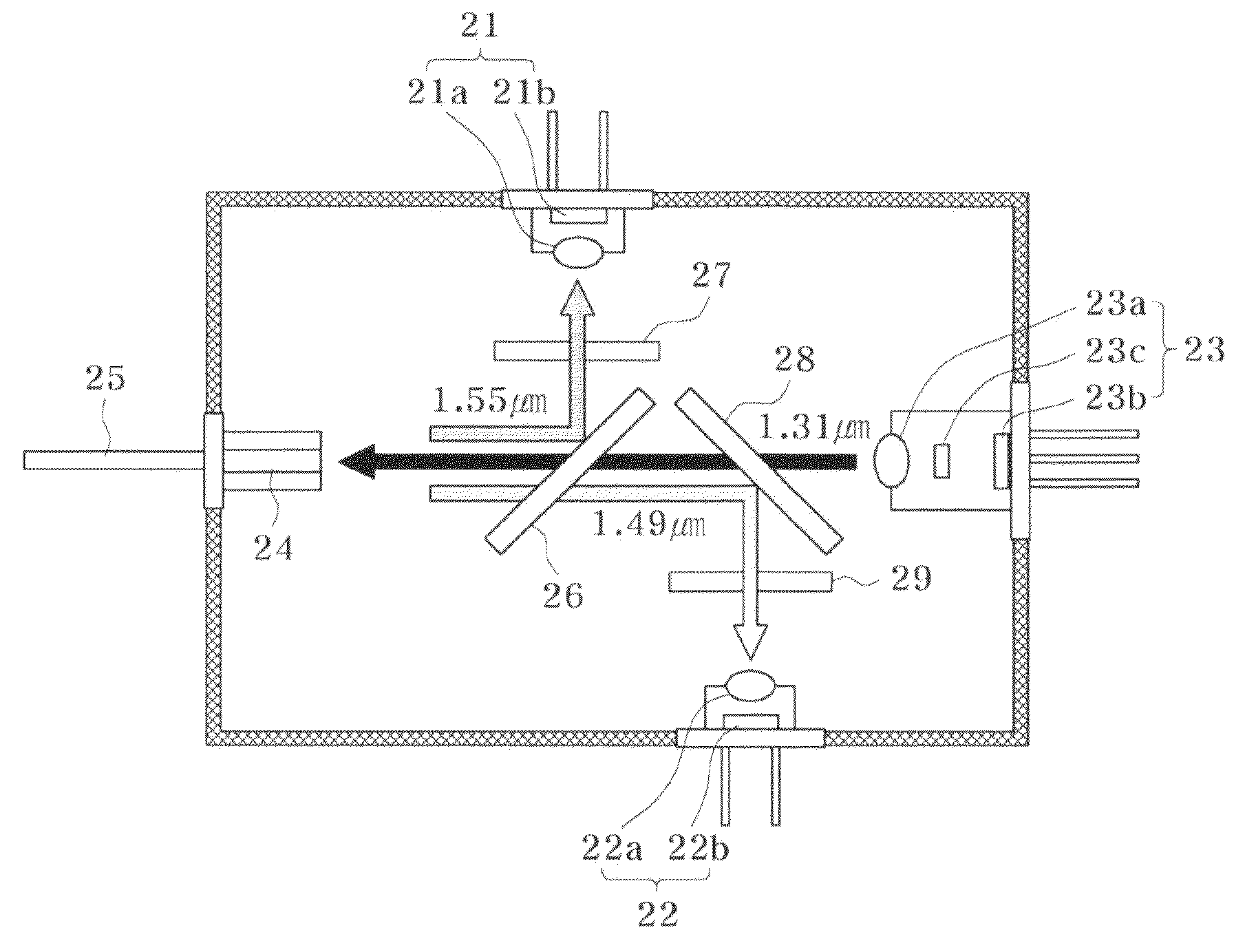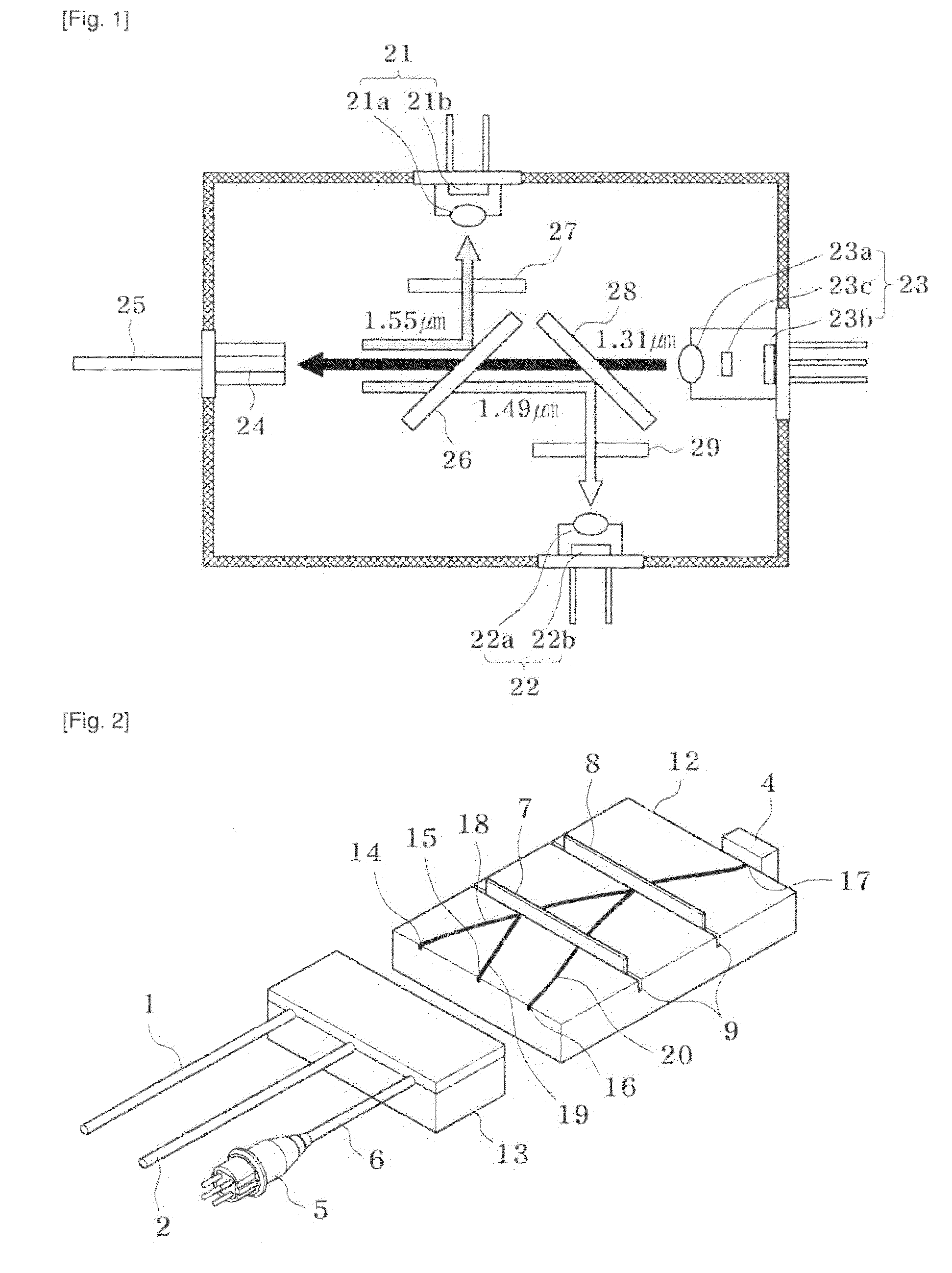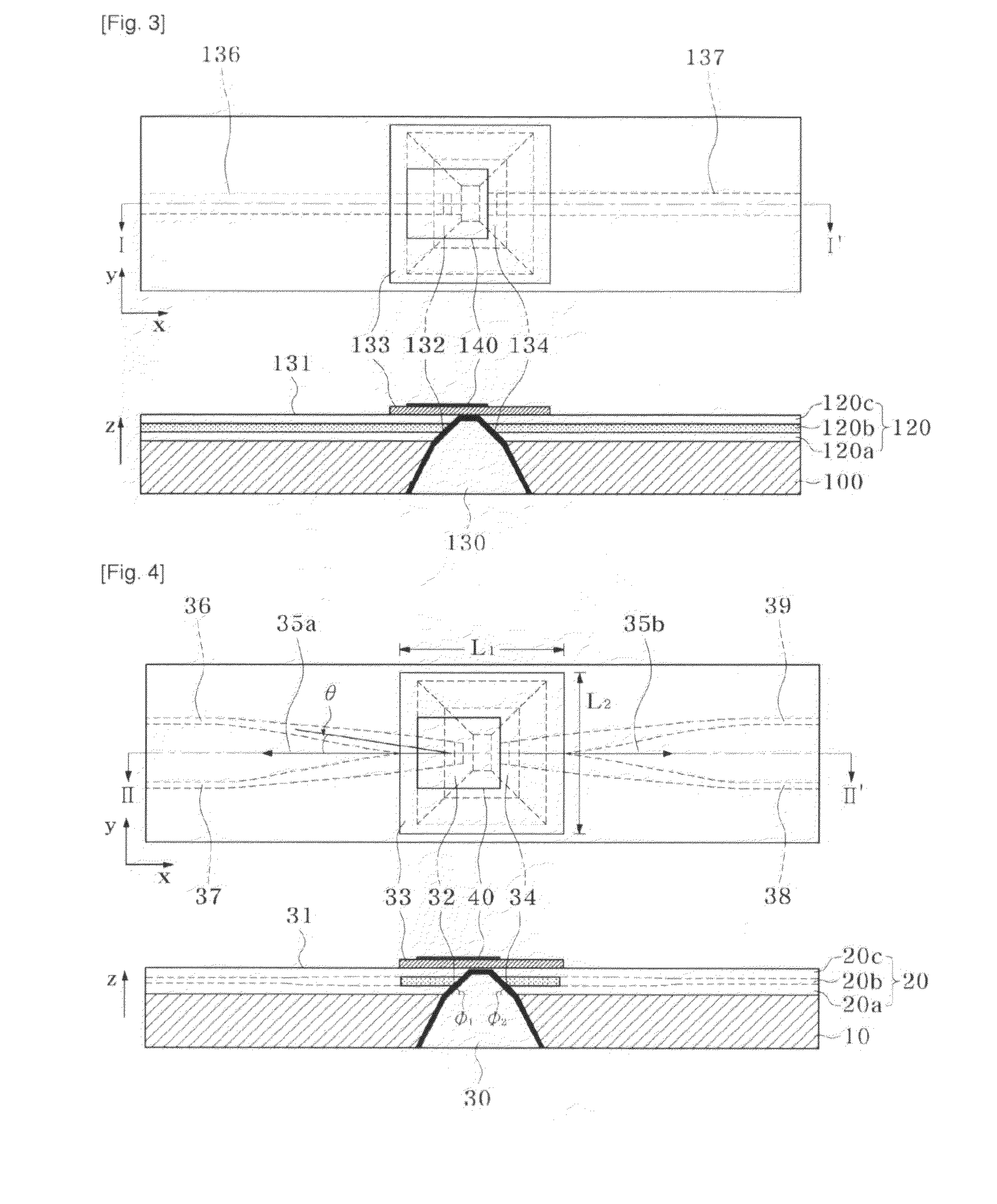Optical Module and Fabrication Method of the Same
a technology applied in the field of optical modules and fabrication methods of the same, can solve the problems of serious bottleneck in production, increase in the number of optical components used, and significant production problems, and achieve the effects of improving the productivity and reliability of optical modules, facilitating the production of effective and reliable methods, and simple alignmen
- Summary
- Abstract
- Description
- Claims
- Application Information
AI Technical Summary
Benefits of technology
Problems solved by technology
Method used
Image
Examples
first embodiment
The First Embodiment
[0069]FIG. 3 is a plan-view and cross-section of the optical module according to the first embodiment of this invention.
[0070]Referring to the FIG. 3, the optical module of the first embodiment comprises an optical waveguide 120 formed on a substrate 100; a cutout 130 with at least two slant surfaces passing at least the core 120b of the optical waveguide with a slant 132; an optical film (not-illustrated) coated optionally on the slant 132; and a film-filter 133 above the cutout 130.
[0071]Referring to the FIG. 3, the optical waveguide 120 comprises the first waveguide 136 on the input side and the second waveguide 137 on the opposite side. But it is also possible to configure an optical module using only one of these 136,137 when necessary. When the optical waveguide 120 has a function of transmitting light through the slants 132,134, it is desirable for the cutout 130 to be filled with a transparent optical media. The slants 132,134 may be a total-internal refl...
second embodiment
The Second Embodiment
[0079]The FIG. 4 shows the plain-view and the cross-section of the 3-wavelength BiDi optical transceiver employing the principle of this invention.
[0080]Referring to the FIG. 4, the BiDi triplexer according to the second embodiment is furnished with the first and the second optical waveguide 36,37, the third and the fourth optical waveguide 38,39, the cutout 30, and the film-filter 33. Preferably the cutout 30 is filled with an optical media.
[0081]The first and the second optical waveguide 36,37 has a mutually crossing area L1,L2 on the substrate 10; and the third and the fourth optical waveguide 38,39 are connected to each of the first and the second optical waveguide 36,37 through the crossing area L1, L2.
[0082]The cutout 30 is formed in the crossing area L1,L2, and is furnished with the first slant 32 cutting the first and the second optical waveguide 36,37 with a first cutting angle (Φ1) and the second slant 34 cutting the third and the fourth optical wavegu...
third embodiment
The Third Embodiment
[0120]FIG. 10 is the schematic layout of 4-wavelength optical transceiver produced applying the optical module in this invention. Each component module 56,57,58,59,60 in the FIG. 10 represents the optical module in this invention as in the FIG. 3. The unit modules 56,57,58,59,60 are furnished with the film-filters 56a,57a,58a,59a,60a, optical devices 56b,57b,58b,59b,60b, and the cutouts with the slants (not-illustrated)
[0121]The 4-wavelength optical transceiver in the third embodiment has the receiving wavelengths of 1.49 μm, 1.55 μm, and 1.61 μm, and the transmitting wavelength of 1.31 μm. The IO (Input-output) port 51a of optical signal to external is connected to the first unit of optical module 56 through the optical waveguide 51. The first unit of module 56 receives one channel of wavelength and combines one channel of transmission wavelength into the reverse direction of the incoming optical path. The second and the third unit of module 57,58 connected by t...
PUM
| Property | Measurement | Unit |
|---|---|---|
| cutting angle | aaaaa | aaaaa |
| incidence angle | aaaaa | aaaaa |
| θ | aaaaa | aaaaa |
Abstract
Description
Claims
Application Information
 Login to View More
Login to View More - R&D
- Intellectual Property
- Life Sciences
- Materials
- Tech Scout
- Unparalleled Data Quality
- Higher Quality Content
- 60% Fewer Hallucinations
Browse by: Latest US Patents, China's latest patents, Technical Efficacy Thesaurus, Application Domain, Technology Topic, Popular Technical Reports.
© 2025 PatSnap. All rights reserved.Legal|Privacy policy|Modern Slavery Act Transparency Statement|Sitemap|About US| Contact US: help@patsnap.com



